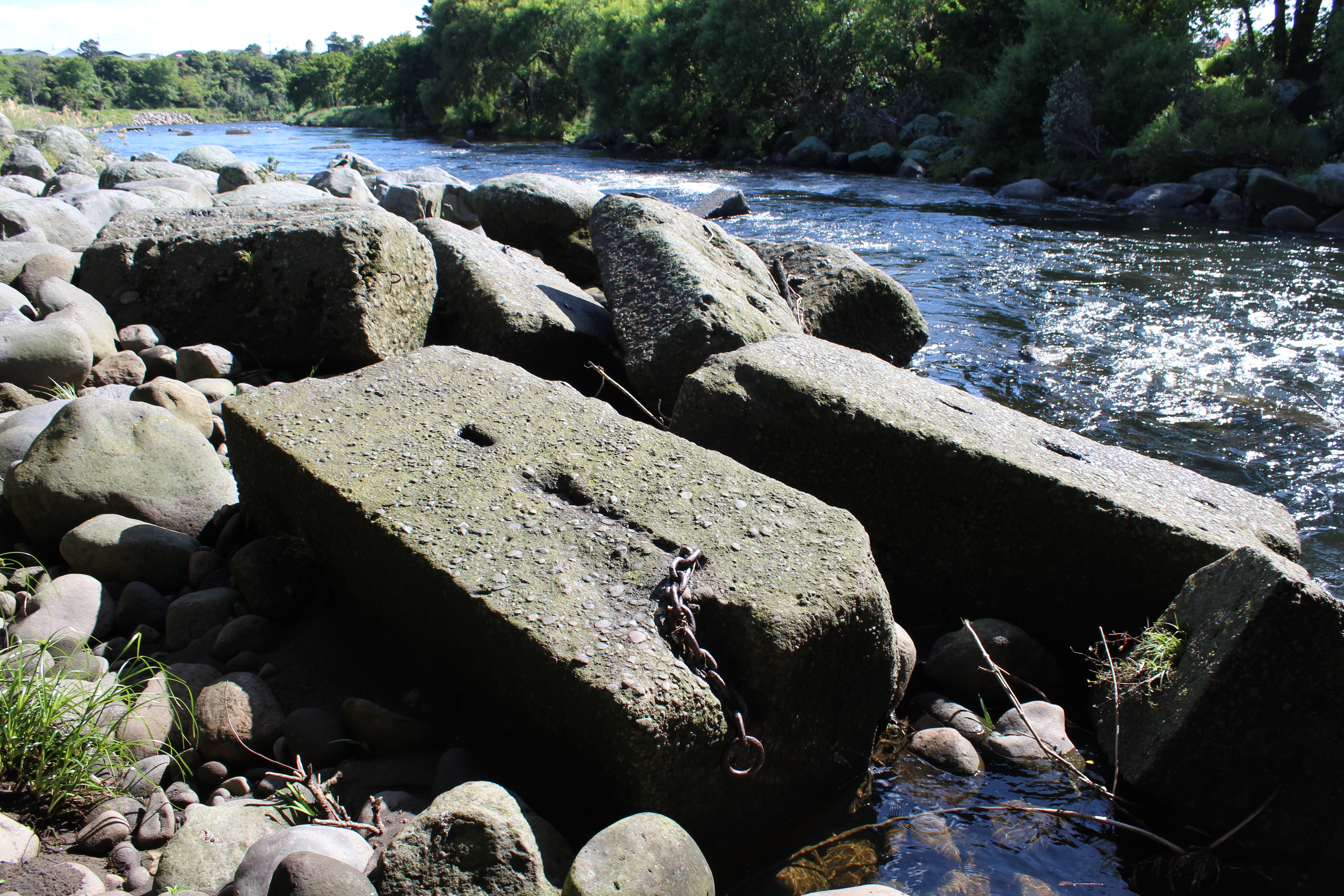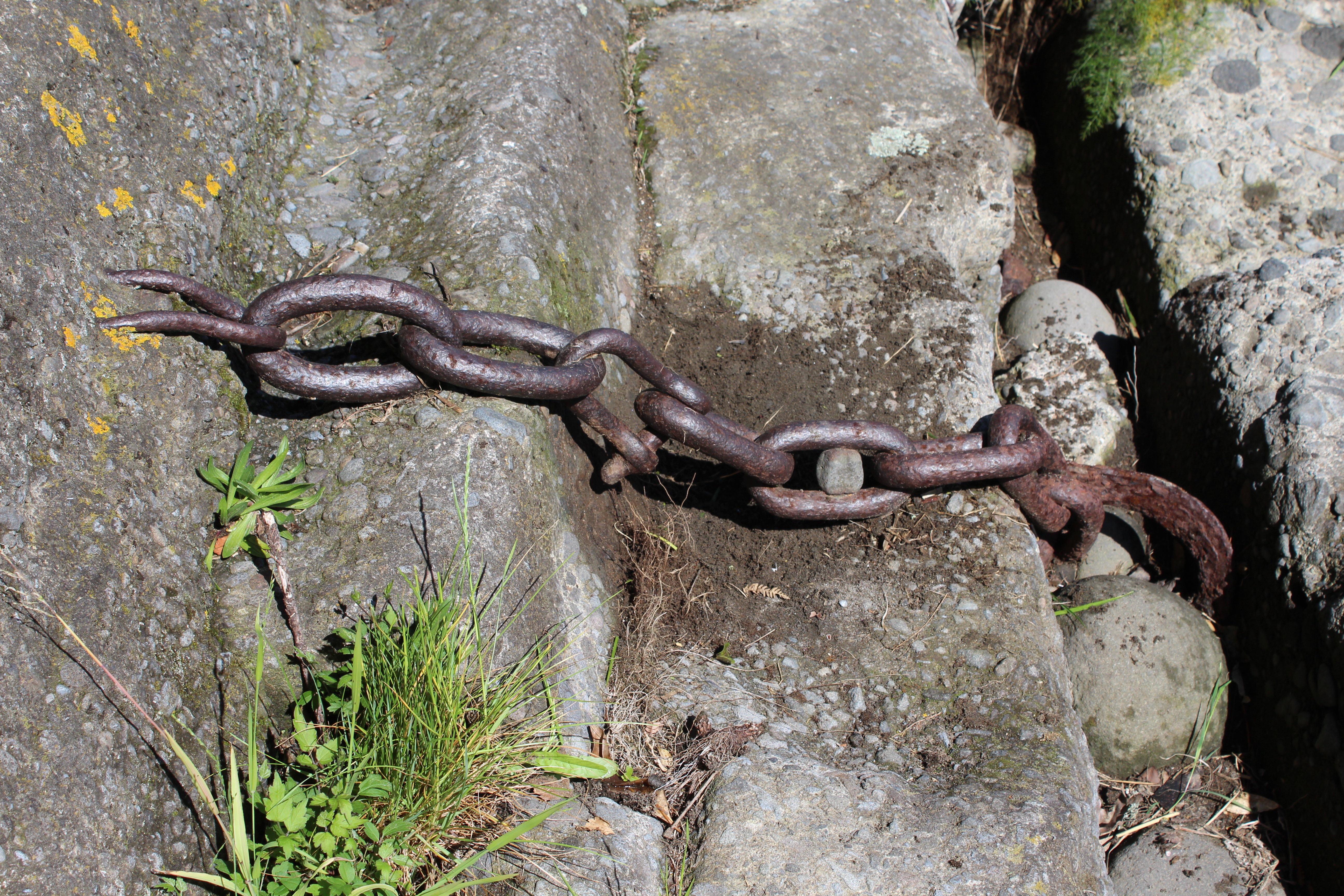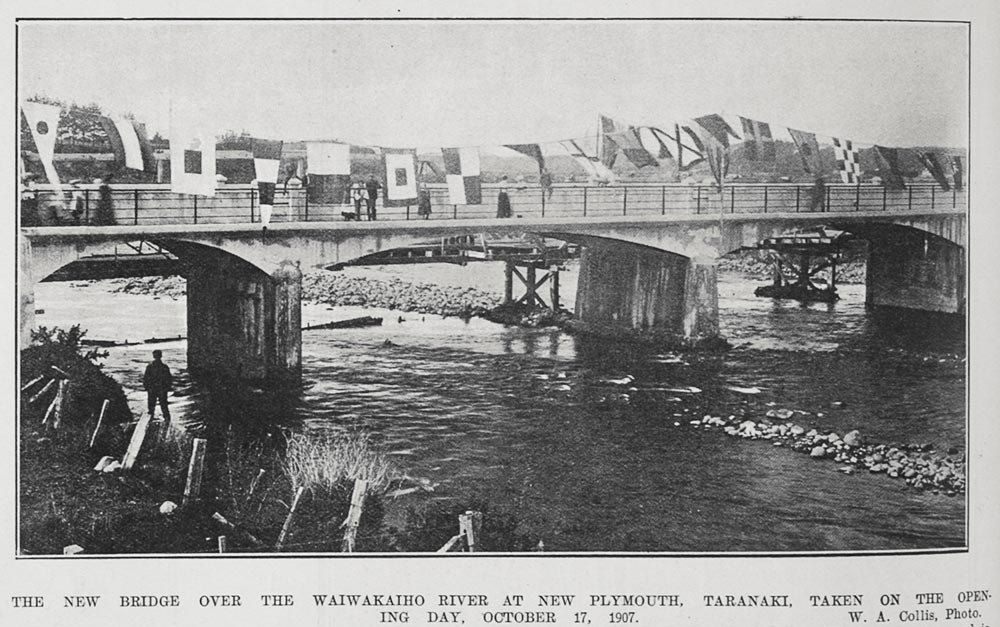















In 1906 it became necessary to replace the old wooden bridge over the Waiwhakaiho River. The Taranaki County Council provided the bulk of the funding with the New Plymouth Borough agreeing to contribute £500 for a new ferro-concrete bridge. Six tenders were received and that of L. J. P. Spencer was accepted with T. Clare as Clerk of Works.
The bridge was opened on 17 October 1907.
At the time it was hailed as the longest reinforced concrete bridge in the country. (Thornton 1996)
The Taranaki Herald of 18 Oct 1907 reported that -
"A handsome marble slab has been erected on the new Waiwakaiho bridge bearing the following inscription:
"Waiwakaiho bridge erected 1907 by the Taranaki County Council.
J. Brown Chairman, M. Hopson, R. Stevens, G. V. Tate, J. R. Hill, G. Adlam, A. George, C. Andrews, Councillors;
R. Ellis, Clerk; J. Skinner, Engineer, L. P. G. Spence, Contractor."
Questions were soon raised over the stability of the abutments and piers of the bridge and, around 1911, a temporary weir of stones in wire gabions [baskets] was built just below the bridge to prevent further erosion. A more permanent weir was begun in 1916 by contractors T. & R. Parkin. In November that year a major flood caused by two days of torrential rain resulted in the eastern end of the bridge collapsing.
It is understood that steps will at once be taken to connect the undamaged portion of the bridge with the eastern bank by a temporary wooden structure that will serve for light traffic until plans for a permanent connection are decided upon. (Taranaki Daily News 9 Nov 1916)
The permanent weir - only partly completed at the time - consisted of large rectangular concrete blocks, many of which can still be seen in the river below the present bridges. The concrete-block weir was completed by 1919. It is not known when it was broken up but it still appears to be in place in 1976. The blocks are 2.70m (L); 1.20m (W) & 1.06m (D). Many still have anchoring chains and iron attachment "D:"s in them.
In 1978 a new bridge was opened as part of the upgrading of the northern outlet to allow the transporting of the large modules for the methanol and synthetic fuel plant at Motunui, north of Waitara. It was built on the downstream side of the 1907 bridge which was then demolished. Several houses on the northern side of Devon Road were removed for road widening and replaced with commercial premises. The present (2016) north-bound lanes are on the 1978 bridge.
A further major project of road widening and bridge construction between Vickers Road and Hobson Street was completed in 2016. This involved building additional bridges at Waiwhakaiho and Te Henui.
Please do not reproduce these images without permission from Puke Ariki.
Contact us for more information or you can order images online here.